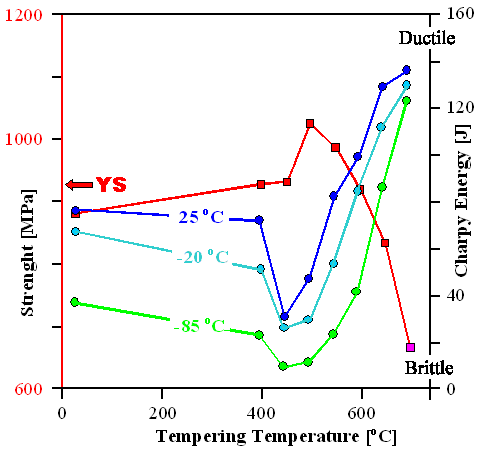| |
Charpy Impact Test: Example |
 |
The example shown is from the set of experiments
I used to illustrate the equivalence of hardness and yield strength; this
link leads to the actual paper |
|
 |
Here is the set of data: |
| |
|
|
|
 |
| Example of Charpy impact energy measurements. |
| The specimen was a "high-strength
low-alloy" steels; the yield strength curve (YS) obtained by tensile testing is also shown for comparison. |
|
| |
|
 |
We have three series of tests with 8 specimens per series to get statistically
significant data. After "tempering", meaning holding the samples at the temperatures indicated for 1 hour and
then let them cool to room temperature, Charpy impact tests were done
at the three temperatures indicated. |
|
 |
What we see is:
- The steel is always more brittle at lower testing temperatures.
- Tempering around 500 oC (932 oF) produces very brittle steel. At -85 oC (- 121 oF)
the steel is brittle like glass
- Tempering at other temperatures is better with respect to brittleness. High-temperature tempering produces steel quite
ductile at room temperature (25 oC) and below.
- Unfortunately - but expected - the yield strength or hardness shows opposite behavior. It is highest for brittle steel.
- The best compromise between brittleness and hardness is found for tempering at 600 oC (1112 oF).
I'm sure you see why.
|
 |
There are many more examples for Charpy impact energy measurements in a science module in chapter 9 |
| | |
|
© H. Föll (Iron, Steel and Swords script)
